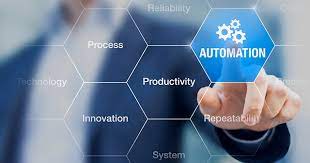Automation of reporting processes involves the use of technology and tools to streamline and optimize the generation, distribution, and analysis of reports. It reduces manual effort, minimizes errors, improves efficiency, and frees up valuable time for more strategic tasks. Here are some key considerations for automating reporting processes:
- Identify Reporting Needs:
Understand the reporting requirements of your organization or team. Identify the key reports that need to be generated on a regular basis, including their frequency, content, and intended audience. This helps you prioritize and determine which reports are suitable for automation. - Select Reporting Tools:
Choose the appropriate reporting tools or software that align with your reporting needs. There are various tools available, such as business intelligence platforms, data visualization tools, and reporting modules within enterprise resource planning (ERP) systems. Consider factors like ease of use, compatibility with your data sources, and the ability to automate data retrieval and report generation. - Data Integration and Preparation:
Ensure that your data sources are integrated and structured in a way that supports automated reporting. Connect your reporting tool to relevant data repositories, databases, or APIs to retrieve data directly. Perform data transformations, cleaning, and modeling as necessary to ensure data accuracy and consistency. - Report Template Design:
Create standardized report templates that can be automatically populated with data. Design the templates with a clear structure, including sections for headers, footers, tables, charts, and any other required visualizations. Consider the layout, formatting, and branding guidelines to ensure consistency across reports. - Automate Data Extraction and Transformation:
Utilize automation techniques to extract and transform data from various sources into the required format for reporting. This may involve scheduling data pulls, setting up data connectors, and applying data transformations or calculations as needed. Automation can save time and reduce the risk of human errors associated with manual data extraction and manipulation. - Report Generation and Distribution:
Automate the process of generating reports based on predefined schedules or triggered events. Set up workflows or scripts that retrieve the necessary data, populate the report templates, and generate the final reports in the desired format (e.g., PDF, Excel). Consider options for report delivery, such as email distribution or publishing to shared platforms. - Visualization and Interactive Features:
Leverage visualization capabilities to present data in a clear and engaging manner. Utilize charts, graphs, dashboards, and interactive elements to enhance the insights derived from the reports. Automation can help in automatically updating visualizations and maintaining real-time or near-real-time data representation. - Quality Assurance:
Implement validation and quality checks to ensure the accuracy and reliability of automated reports. Set up automated data validation rules, perform data reconciliation, and verify the integrity of calculations or aggregations. Regularly review and audit the automated reporting processes to identify and address any issues or discrepancies. - Security and Access Controls:
Consider security measures to protect sensitive data and ensure appropriate access controls. Implement user authentication, role-based access, and data encryption as required. Adhere to data privacy regulations and internal policies to maintain data confidentiality and integrity. - Continuous Improvement:
Regularly assess the effectiveness of your automated reporting processes and seek feedback from report recipients. Identify areas for improvement, such as optimizing data retrieval speed, enhancing data visualizations, or incorporating additional data sources. Continuously refine and enhance your automated reporting workflows to meet evolving business needs.
By automating reporting processes, you can save time, reduce errors, and enable timely access to accurate information for decision-making. It allows your team to focus on data analysis, interpretation, and strategic activities, driving better business outcomes.
SHARE
